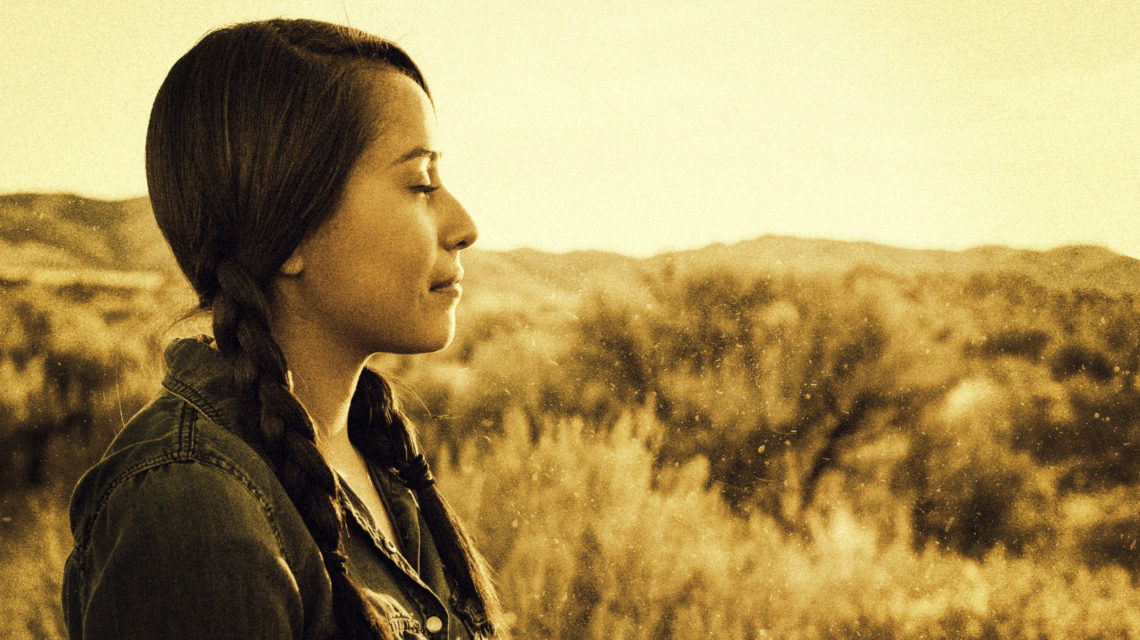By James Warren
The Daily Beast, June 1, 2019.
Together the U.S. Army and paternalistic government policies all but wiped out the country’s indigenous culture. But Native Americans never stopped fighting back.
The destruction of Indian peoples’ power via military and diplomatic means was a continuous project of European Americans from the very beginning of settlement in the 1620s until the surrender of Geronimo’s Apaches in 1886. Four years after the Apaches put down their guns, at a place called Wounded Knee Creek in South Dakota, the U.S. Army massacred some 300 Sioux followers of the Ghost Dance—a potent religious awakening among the Great Plains Indians that provoked great fear among the authorities, for it predicted the disappearance of all the whites, and the return of the traditional Indian world, including the buffalo herds and Native ancestors who’d died resisting the invasion of Euro-Americans.
Wounded Knee serves as a kind of grim coda to one of the sorriest chapters in American history.
According to David Treuer, a gifted and subtle Ojibwe writer and anthropologist who grew up on the Leech Lake Reservation in Minnesota, what lay ahead for Indians was even more tragic than what went down during the 270 years of warfare that ended in 1890. The U.S. government embarked on a badly misconceived crusade to assimilate Native communities into mainstream America. The goal of the 1886 Dawes Act (and subsequent legislation) was nothing less than the destruction of traditional Indian culture and identity.
The theory behind the Dawes Act was simple enough: The only good Indian was a white Indian. The corrupt paternalists of the Bureau of Indian Affairs and misguided missionaries from the mainline Protestant denominations presided over this malign and dehumanizing process.

By 1934, Treuer reports in his brilliant and moving new history/memoir, The Heartbeat of Wounded Knee: Native America from 1890 to the Present, tribal lands had been reduced from 138 million acres to a mere 48 million, mostly by fraud. Grinding poverty prevailed on most reservations, as did alcoholism and despair. Many anticipated that discrete Indian communities would vanish from the scene entirely in a matter of a decade or two. Somehow, however, the Indians hung on.
The Indian Reorganization Act of 1934 signaled the beginning of the end of the assimilation era. Floundering government educational and economic development programs on the reservations were revamped; financial credit was extended to the tribes. Most important, Indian communities were authorized to form their own governments and to resume long-prohibited religious practices and lifeways. In short, the Reorganization Act conferred on Indian people a certain degree of freedom to approach the task of being both Indians and Americans in their own way and time.
So began a long and very much ongoing struggle by tribal governments to break the hold of the Bureau of Indian Affairs over all matters of Indian life, and for Indians to take control over their own communities. That struggle reached its dramatic and fiery peak in the ’60s and ’70s, during the Indian Renaissance, when writers like N. Scott Momaday and Vine Deloria and the violent militancy of the American Indian Movement (AIM) brought the preoccupations and struggles of Indian country to the attention of mainstream America for the first time. This was the heyday of pro-Indian legislation, when Congress and the Supreme Court began to restore Indian sovereignty, and address the many injustices and crimes committed against Indians by both the federal government and the states.
“Treuer is no militant, and his book is a long, long way from a screed on the sins committed by the United States against indigenous peoples.”
Treuer’s discussion of AIM’s impact on the quest for social justice and Indian rights is particularly compelling and fair-minded. Over the course of the late ’60s and ’70s, AIM, led by militants like Russell Means and Dennis Banks, seized high-profile objectives such as Alcatraz prison, the Bureau of Indian Affairs, and of course, the Sioux reservation at Pine Ridge, South Dakota, site of the Wounded Knee Massacre. As the FBI and a cluster of other law enforcement agencies closed in, AIM’s leaders demanded the return of all stolen Indian lands, a federal commission to investigate government treaty violations, and direct negotiations with President Richard Nixon and the secretary of state, among many other things.
AIM’s actions drew widespread support, especially among liberals and academics, despite its frequent resort to violence.
AIM, writes Treuer, “had begun to forge its image—that of the proud Plains warrior fighting the overwhelming forces of whiteness that sought to erase him… The leaders were obsessed with the image and given to grandstanding. Yet in the midst of the counterculture movement that co-opted so much Indian aesthetic and culture, AIM was doing one thing right: It was showing Indians around the country that they were proud of being Indian, and in the most uncomfortable way possible for the mainstream. Indians from reservations and cities alike were, for the first time, pushing back against the acculturation machine that was part of domestic America’s imperial agenda, and doing it loud and proud.”

The siege at Wounded Knee “was both a high-water mark and a deeply disappointing action for AIM. The siege drew national attention to many of the issues that had plagued Indian country for some time: corruption, violence, lack of due process, and the importance of treaties and sovereignty.” Yet in the end, AIM’s militant approach did little to lessen the violence and poverty that plagued Pine Ridge or other reservations. Most of the demands the militants put to the federal government went unaddressed. Between 1973 and 1976 there were more than 50 homicides at Pine Ridge alone. Most were never seriously investigated.
Leonard Peltier, one of AIM’s genuine tough guys, engaged in a series of violent encounters with the FBI and the police in Wisconsin, Washington State, and on the Pine Ridge Reservation. In 1977 Peltier was convicted of murdering two FBI agents in a firefight at Pine Ridge. Still in prison today, Peltier is considered a political prisoner by AIM. Amnesty International lists his case in its Unfair Trials category.

As his discussion of AIM indicates, Treuer is no militant, and his book is a long, long way from a screed on the sins committed by the United States against indigenous peoples. Quite the reverse. Treuer approaches his vast subject with a kind of quiet humility, seeking to understand rather than indict. He sees nothing to be gained by Indians today adopting a stance of rage or victimhood. “If we insist on raging against our dependency on the United States and modernity itself, we will miss something vital: As much as our past was shaped by the whims and violence of an evolving America, America, in turn, has been shaped by us.” Better to take up a resolute defense of Indian rights, and to remember and celebrate the past than to rage against injustice and past wrongs.
The overarching theme of The Heartbeat of Wounded Knee is that, through imagination, adaptability, and sheer tenacity, Indians have not only survived many losses and wrongs, but flourished. The book is also “an attempt to confront the ways we Indians ourselves understand our place in the world, as our self-regard—the vision and versions we hold of who we are and what we mean—matters greatly.”
Indeed, the book sparkles with insights about how Indian identity has been preserved and conveyed from generation to generation. Indian children from the cities, who live largely among whites, have been “raised on story after story of the rez—stories about bad cars and violent sheriffs and selling blueberries or baskets or tamales or necklaces by the roadside; about five or ten or fifteen Indian people living in a shack; about one drunkscapade after another; about the foibles or idiosyncrasies of this or that elder. These stories become foundational myths, benchmarks of authenticity, even though they are all, in one way or another, stories of loss.”
Part of the magic of this book stems from Treuer’s ability to move seamlessly back and forth from the Big Indian Story to the voices of living Indians explaining to us, and to themselves, what it means to be Indian, American, and both at the same time. Treuer himself, as well as his hilariously funny, pot-puffing Uncle Bobby, who still lives on the rez in Minnesota and makes a good living as a year-round hunter-gatherer (it’s true!), are among the cast of characters. These sections of the text open a window on the contemporary Indian world, in its dazzling variety, and infuse the book with a kind of vividness and punch rarely found in narrative histories.

As Treuer tells it, Indian country since the New Deal has had its ups and downs, surely, but it has been on a generally upward trajectory.
Population of indigenous Americans has climbed from a low of 240,000 in 1900 to 2.9 million today.
Many Indian communities across the country either are, or are becoming prosperous, thanks to a new spirit of entrepreneurship that goes well beyond casinos, fishing, and logging, and to a growing Indian middle class. Corruption and factionalism among Indian leaders are certainly still problems on reservations, but they are on the decline.
What’s more, mainstream America has come to appreciate the values of Indian culture, particularly traditional Indian conceptions of the relationship between human beings and their earth they inhabit, and the importance of community and spirituality. There’s a new appreciation of the contributions Indians have made in shaping both American history and the national consciousness for the better.
Today, Indian values and voices offer a powerful counterpoint to the shabby consumerism, exploitation, and incivility that define American life. And the history of Indian-white relations since 1620 goes far to remind us that violence and racism have been as prominent in the American story as “freedom and justice for all.”

The Heartbeat of Wounded Knee is by and large a hopeful and inspiring book. And in fact, Treuer offers readers considerably more than a chronicle of Native America since 1890. The first hundred pages present a short but fascinating history of Indians up to that date. Here Treuer charts with dexterity and economy the various strategies Indians developed across North America to preserve their independence and ways of life. At the same time these hundred pages serve as a primer on Indian-white relations, describing and explaining the apparatus of conquest as practiced by the Spanish, the Dutch, and especially the English and their American descendants. The author eschews what might be called the two competing narrative tropes on this subject in favor of a more balanced version of events.
The first narrative is that the Europeans came to America fleeing tyranny, “found” the Indians and wanted to civilize them with the best of intentions, but there were complications. The other, more recent trope is that the Europeans came “intent on genocide and were largely successful at it.”
Treuer sees something much more complex and ambivalent going on here, in which the best of intentions mixed with the worst. Whatever else happened, the Indians were not simply objects of conquests. They played, and continue to play, a central role in the story of North America since 1600. They “resisted, helped, hindered, and constantly negotiated the changes wrought by colonization and dispossession.”
Treuer does not see the Indian past as a source of weakness or sorrow. Indigenous people, he says, have every reason to look on their traditional cultures and their history of resistance and adaptation as a source of strength, a bonding agent, for the 21st century. “Our people spent the better part of the 1960s and 1970s figuring out how to be both Americans and Indians; how to move forward into the future in such a way as to not leave the past behind; to once and forever destroy the idea that to live one kind of life meant shedding the other one; and to find some productive balance between growth and violence, between destruction and regeneration.”
It’s hard to imagine there will be a better, more compelling look at Indian country than this one anytime soon.











